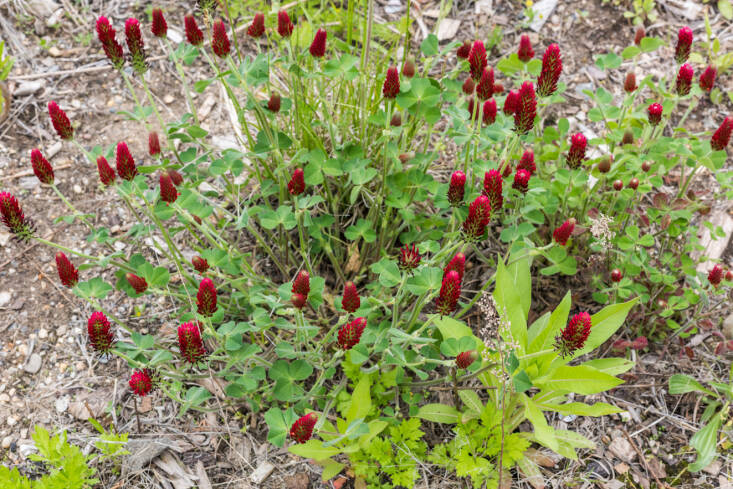When the people behind Island Bee Project mention what they do for a living, they are met with incredulity that three Latina women are beekeepers in New York City. This is followed by a classic human response: “Honey? I’d like some of that!” Their mission, though, is the opposite of honey production. “We firmly believe that honey is bee food and should be treated with the utmost respect,” explains Stacey Vazquez. “Removing the food that they tirelessly make for themselves, only to feed it to humans, seems off to us.”

Along with Carolina Zuniga Aisa and Brenda Alvarez, Vazquez runs Island Bee Project as an educational non-profit, at River Street Farm Collective in Brooklyn. The group gives hive tours, and their fundraising efforts are never-ending. “We also participate in tabling events where we sell candles and products made with sustainably gathered gifts and materials from our bees,” says Vazquez (see last week’s gift guide for Island Bee Project’s propolis spray). “This allows us to provide equal access to education for schools and programs that may not have the funding. Next season we hope to be able to work with more schools—we love working with children and teens.”

Below, Vazquez explains how they winterize colonies on the edge of the East River, and what home gardeners can do to help bees through the tough times.
Photography by Valery Rizzo.
Surely, there must be some leftover honey?

“Winter always presents some unique challenges. Our main focus is the survival and preservation of the species, so absolutely no honey is harvested after a certain point in the season. If we have a hive that is producing an amazing amount of honey, we’ll pull frames out and keep them aside. We will first ensure that each colony we care for has at least 7 to 8 frames of honey to get them through winter. If any of them are lacking, we will feed them the reserve frames we’ve set aside. We would so much rather our girls have their actual food, as it was made by them, for them.”
When should you start preparing the bees for winter?

“We start winter prep for our girls way before you’d think! In the late summer all the blooms dry up before the fall blooms begin (a dearth period). Colonies with light honey supplies may be given a little feeding so they aren’t ravenously feeding on sources that would be unhealthy for them. This is the time in summer when they may hang out at your barbecue looking for sweet things, or are owning your waffles while you sit outside for brunch.
“Once the fall blooms start (goldenrod, asters, cosmos, marigold etc), bees work overtime to bulk up their winter supply. After those blooms are gone, it’s a wrap and they won’t be able to forage, as everything is dried up. This year proved to be pretty stressful for us, as the high temperatures made the bees feel they should still be foraging. With nothing to forage, they start eating up their winter food supply with no means to replenish them. Luckily, we had a nice amount of reserve honey frames to add back to them.”
What should you be growing for winterizing bees?

“We always ask gardeners and urban farmers to try to provide late fall blooms in urban areas. Goldenrod for instance is an amazing fall food source for all pollinators (not just honeybees). Honestly, providing plentiful forage for pollinators is an amazingly helpful thing that anyone can do to help them survive. Early spring blooms are also super important. Bees come out of a semi-dormant phase and are absolutely ready to work, work, work.”
Should you ever feed bees sugar?

Sugar is sometimes needed. “Jars are filled with a simple syrup with different beneficial oils. We poke a couple of holes in the lids and place them upside down on the top bars of the hive, which creates a bit of a vacuum inside the jar. Bees can drink from them without getting doused with sugar, or drowning. This is done during the dearth period, to help them build their winter food supply.”
“We only feed the bees sugar during dearth periods (times when there’s no pollen or nectar for them to forage), or to help them build up for winter. Never as a substitute. Theoretically, as a human you could eat fast food three times a day and survive, but this would leave your body in bad shape. That’s basically how we feel about taking bees’ food and feeding them sugar to make up and substitute for what you’ve taken.

Besides food, what else do bees need?

Water. The bees at IBP are perfectly sited for food and hydration, being part of River Street Farm Collective, on the edge of an aquaponics urban farm (see Aquaponics: Is This Closed Loop System for You?). “The water from the aquaponic fish tanks that feed the beds are super rich in minerals and nutrients, and our bees simply couldn’t get that nutrition from plain water. Yemi from Oko Farms, keeps us updated on which beds the bees seem to be interested in the most during the season. Sometimes it’s oregano, sometimes lemongrass. It varies, and I have to believe it’s because they know what nutrients they need at given times, and are able to find them in the rich waters of the farm. It’s a beautiful relationship.”
For more on bees, see:
- Are Honeybees Putting Other Pollinators Out of Business? The Backlash to Urban Beekeeping
- Object of Desire: Wild Bee Hives
- Secret London: The Bees of Buckingham Palace









Have a Question or Comment About This Post?
Join the conversation